Classic buttercream frosting is soft, fluffy, and silky smooth. It’s the perfect topping for desserts like sugar cookies, cakes, cupcakes and more. Make sure to scroll past the below recipe card for lots of tips and tricks to produce the perfect frosting. The method is just as important as the ingredients! When you master the perfect Buttercream Frosting, you’ll want to use it on everything!
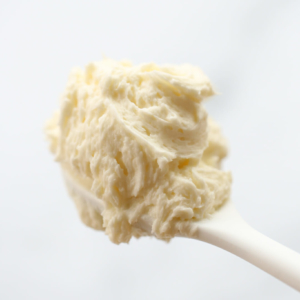
The Best Buttercream Frosting
- Total Time: 15 minutes
- Yield: 2 cups
Description
Fluffy, creamy buttercream frosting. Perfect for sugar cookies, cupcakes, brownies, or more!
Ingredients
1 cup (2 sticks) real butter, at room temperature
3 cups powdered sugar (for an extra smooth frosting, sift first)
2 teaspoons vanilla extract (or a combo- I like 1/2 t almond + 1 1/2 t vanilla)
1–6 tablespoons cream (see instructions for details)
Instructions
Place room temperature butter in a stand mixer and beat for 2 minutes until light and fluffy, scraping down sides occasionally. With beater running on low-medium, slowly add powdered sugar, letting it incorporate each time before adding more. Scrape down sides of bowl as needed. Add extracts and then with mixer running, add cream until desired consistency is reached. Continue beating on medium-high speed for 3-5 minutes until frosting turns to a light, fluffy, smooth consistency.
Storage: Store in fridge in an airtight container. Let come naturally to room temperature and then re-beat until fluffy to use again.
- Prep Time: 15 minutes
If you want to produce the best buttercream frosting, the method is JUST as important as the ingredients. Read through these tips and tricks before making your first batch!
What kind of butter should I use for buttercream frosting?
- Use Real Butter. First and foremost, when you’re making buttercream frosting use real butter. Skip the margarine, or any other butter-like product here. Obviously in a pinch those work, but in a recipe with only a few ingredients, it’s important they’re all really good and real butter will produce the best results. I personally use salted butter. You need salt in this recipe anyway, and salted butter makes that easy. If you use unsalted butter, that’s just fine- you’ll just need to add in some extra fine table salt as well. I’d start with 1/4 teaspoon and then add to taste.
2. Use Room Temperature Butter. Avoid using the microwave to soften your butter. Over-warming your butter will affect your finished product. If anything, you want it just slightly cooled.
TIP: To get your chilled butter to room temperature quickly, unwrap the sticks and cut the butter into small chunks. The smaller pieces will come to temperature more quickly and evenly. You can also grate butter with a cheese grater (even from frozen) but then you’ll have to wash a cheese grater, so I only use that in a pinch!
Step 1: Whip Your Butter
Before you add anything to your buttercream frosting, place your room temperature butter in the bowl of your mixer and beat on medium-high speed until it’s smooth and creamy, for 2 full minutes. When it’s happening, it feels like forever. But just do it. You can also use a hand mixer, but I suggest a stand mixer since one of the keys to really light and fluffy buttercream is to beat it for long periods of time. You can use your paddle attachment, or as I’m doing – the wire whip attachment. I find the whip attachment incorporates air that produces a light and fluffy frosting but either one works great.
Step 2: Add your powdered sugar
With the beater running, slowly add in powdered sugar a little at a time so it incorporates a little at a time until it’s all added. Your mixture will be thick! If I’m making frosting for a nice cake or something extra special, I also take the time to sift it first. For everyday baking at home I don’t always do this, but if I’m making a special occasion cake I do take that extra step.
Step 3: Add Extract and Cream
For basic buttercream frosting, use vanilla extract. You can play around with any other extract flavor you want! I use 2 teaspoons of extract, and often that’s a combination of flavors. My go-to is 1 – 1 1/2 teaspoons vanilla and 1/2 – 1 teaspoon almond extract. You can experiment and go by taste, but just add a little at time because if you add too much extract your frosting will have a bit of an alcohol flavor. If you’d like your frosting to be as light-colored as possible (it will never be pure white because of the butter) you can use clear vanilla extract.
The last very important ingredient is cream, preferably heavy cream. Using cream, as opposed to milk or water will yield a much smoother, silkier frosting. It makes a significant difference. I start by adding 1-2 tablespoons, with the mixer running, and from there it is about desired consistency. I keep my frosting thicker if I’m using it for something like sandwiching between cookies, and I make it a lot looser for topping cupcakes or decorating a cake. Usually between 2-4 tablespoons is perfect, but I sometimes add up to 6 tablespoons or more depending on desired consistency.
Step 4: Mix, Mix, Mix
The final step is to beat your frosting for a few minutes. I probably beat mine for a good 3-5 minutes, scraping down the sides of the bowl occasionally. It helps dissolve that sugar and incorporate air so your finished frosting has silky feel in your mouth, as opposed to that thick, overly sweet, gritty feeling. It also adds air that makes it light and fluffy. You’ll notice a visible difference the longer you beat your frosting. It turns smooth, fluffy, and almost glossy. It will spread like a dream!
What variations of buttercream can I make?
Honestly the sky is the limit. If you’d like to add coloring, add gel or small amounts of liquid color when you add your extract and cream. For flavor, aside from using different extracts, you can also fold in flavoring agents like liquors, fruit preserves, caramel sauce, unsweetened cocoa powder, spices, citrus zest, etc. You may need to reduce the amount of cream when adding other liquid flavoring agents or increase it when adding dry ingredients (like cocoa powder) Start with small additions and go by taste.
How do I store buttercream frosting?
If you need to store buttercream, place in an airtight container and store in fridge. To use, bring to room temperature naturally and then re-whip until light and fluffy.
Have fun with your buttercream creations and share your successes in the comments!
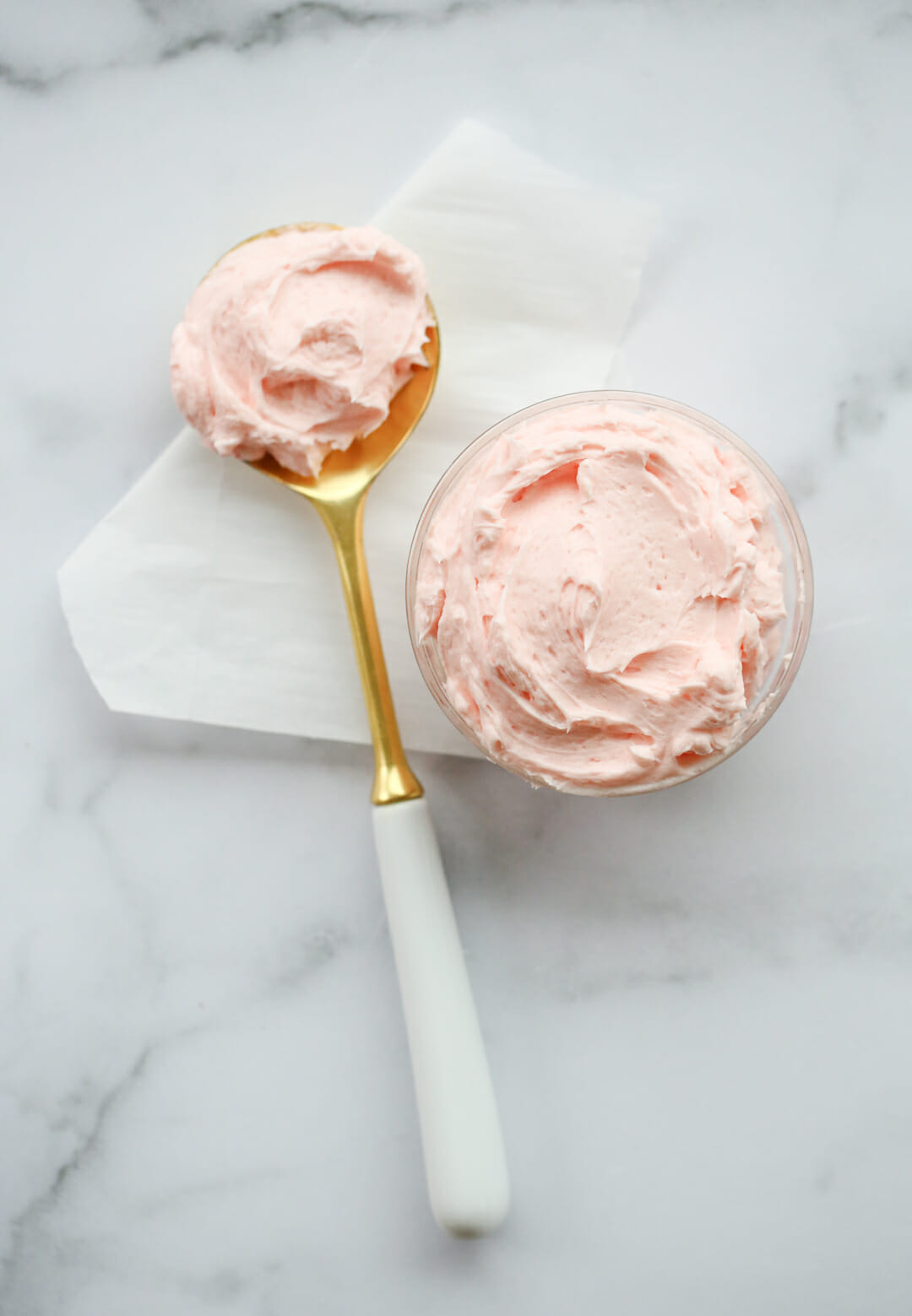
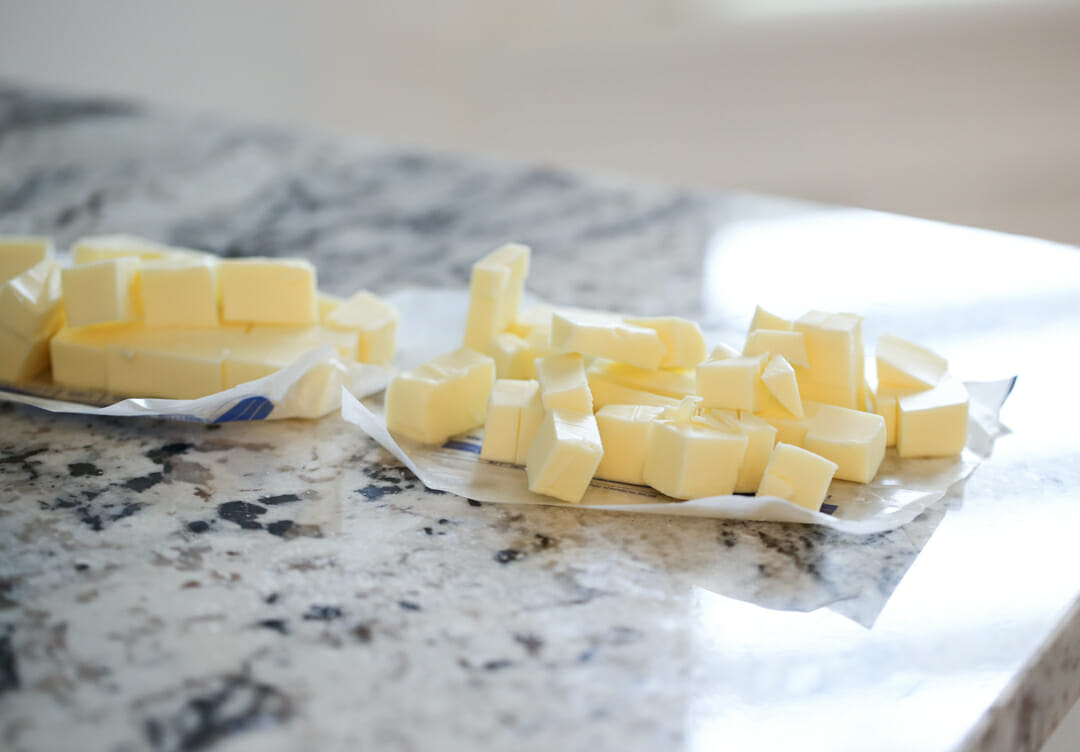
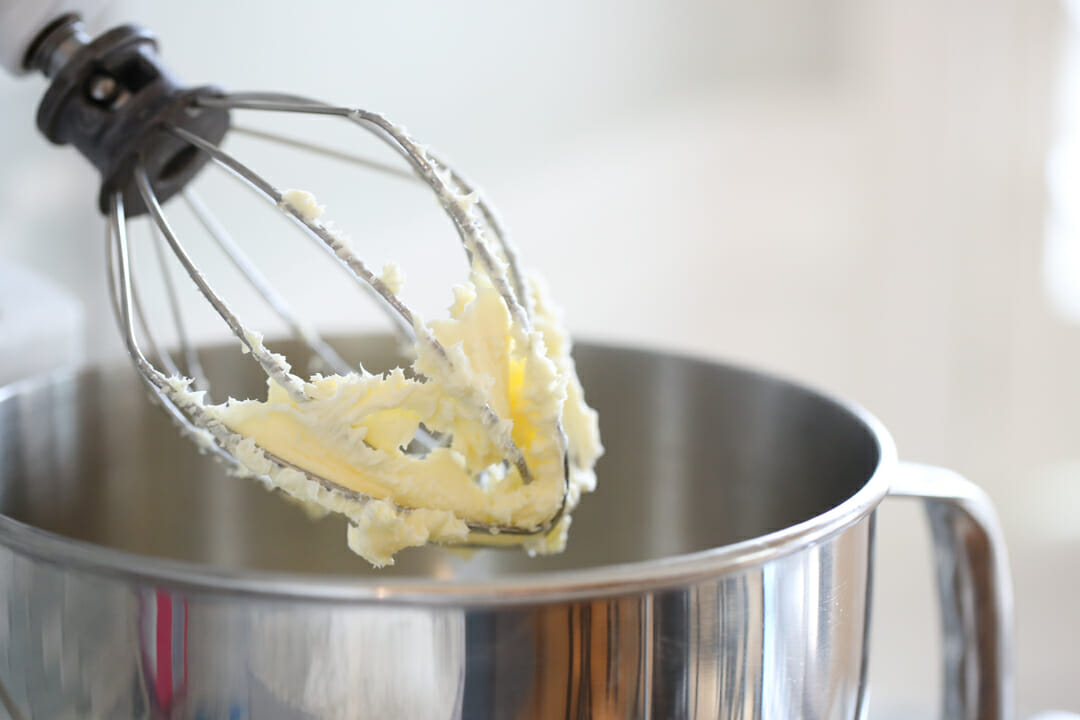
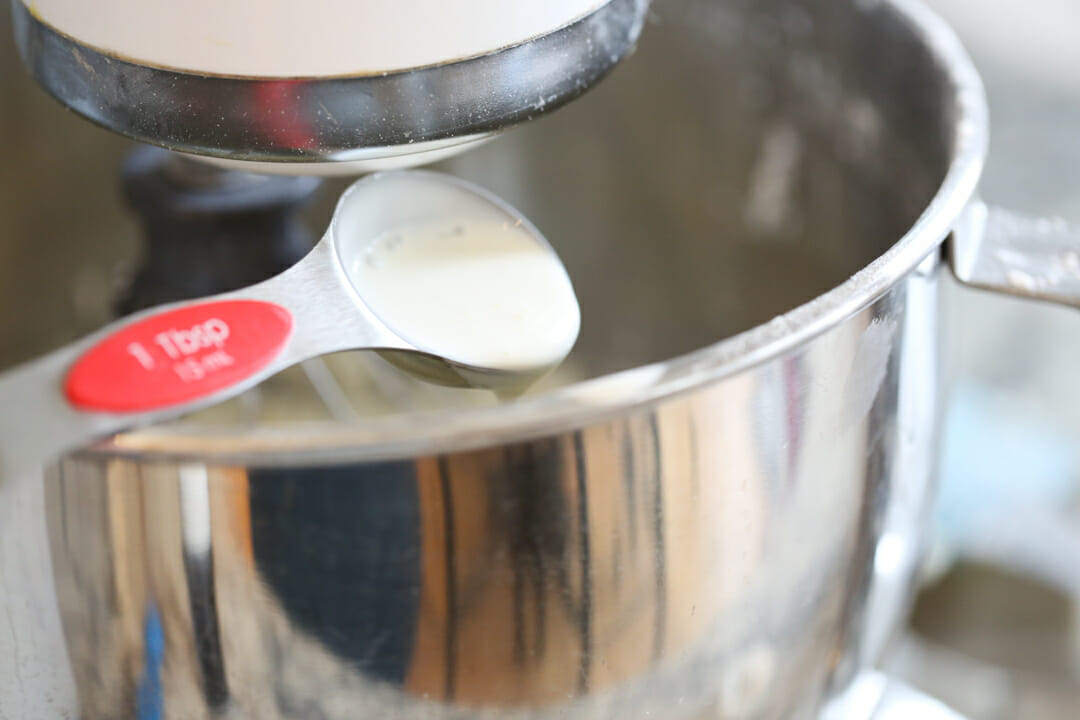
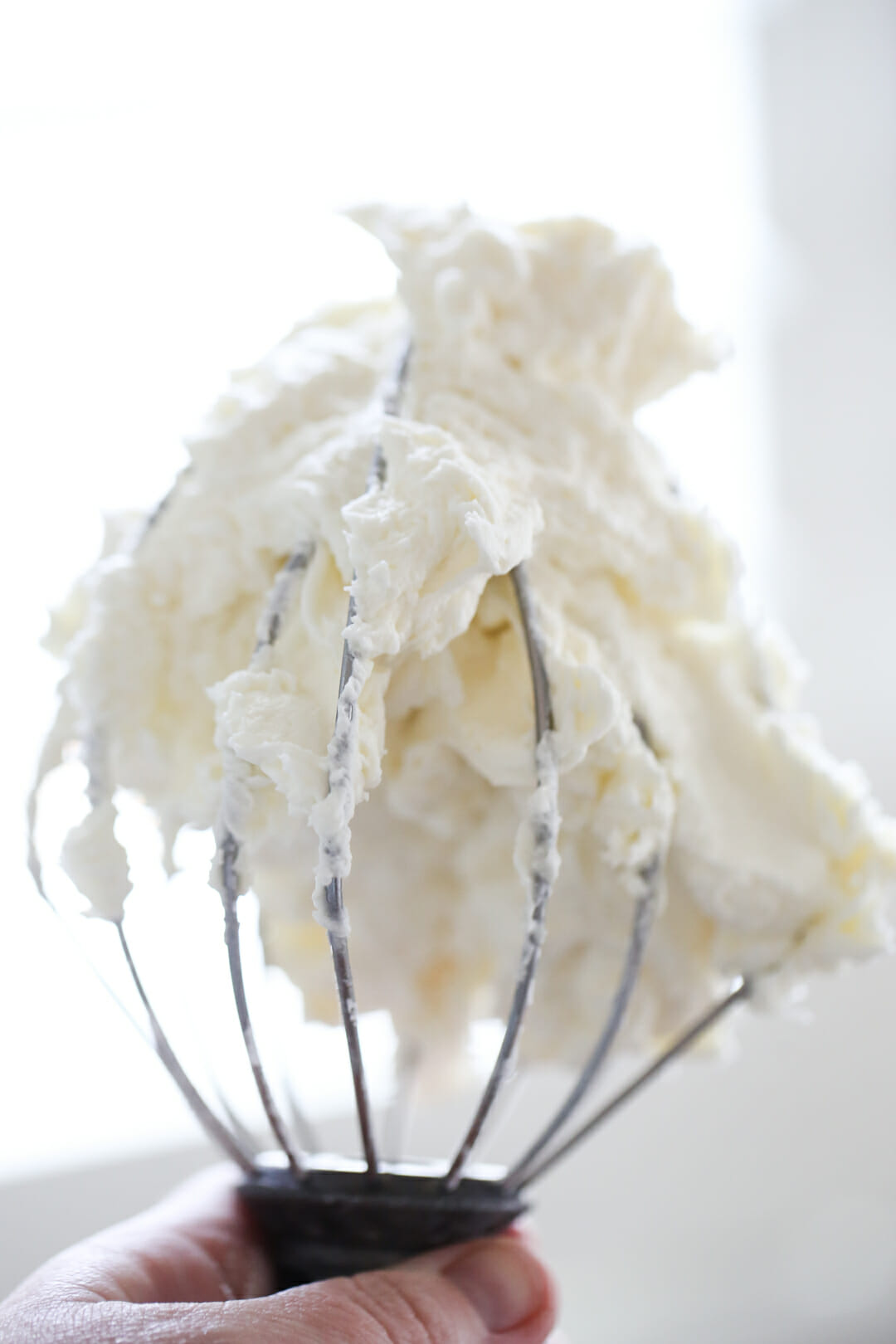
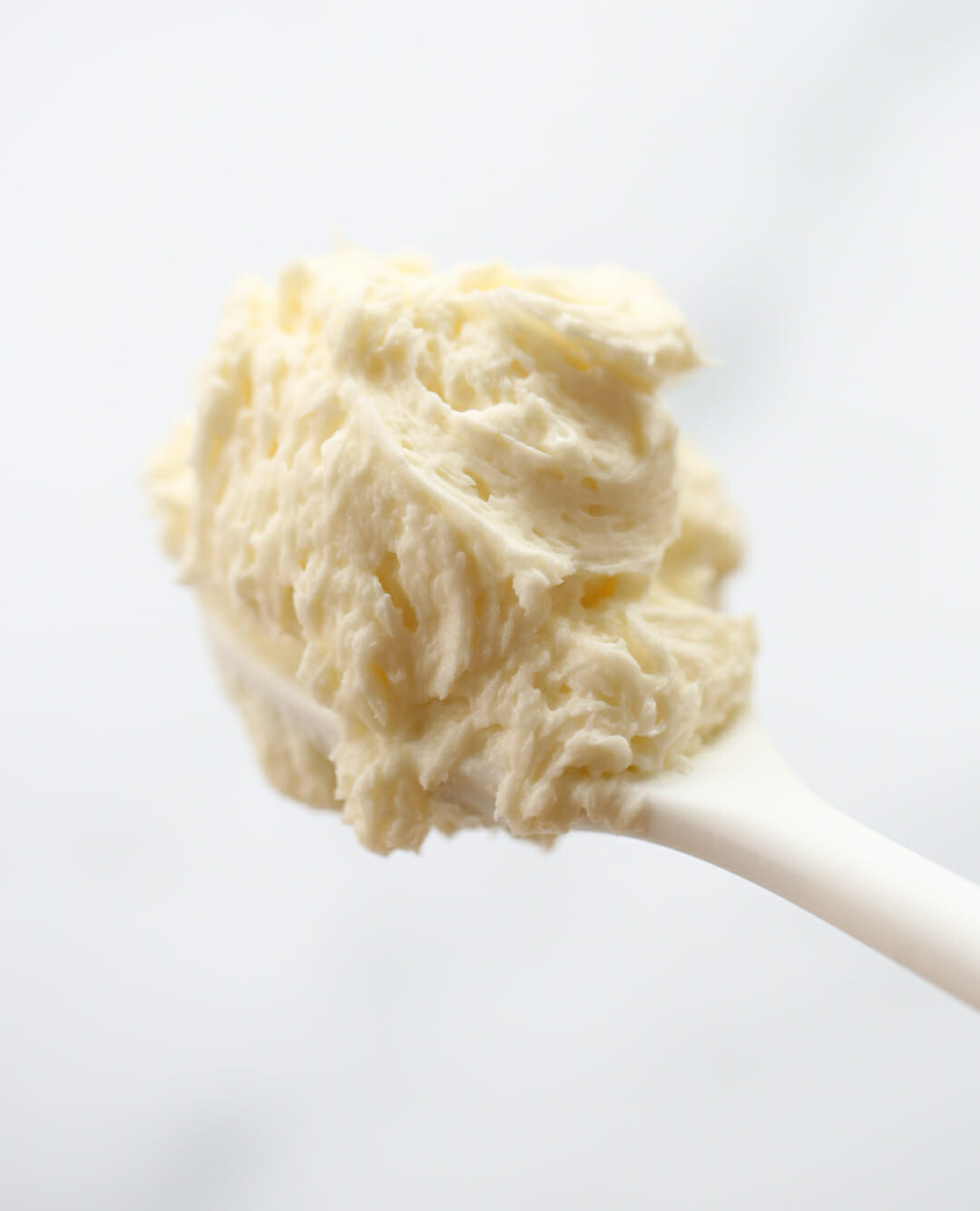
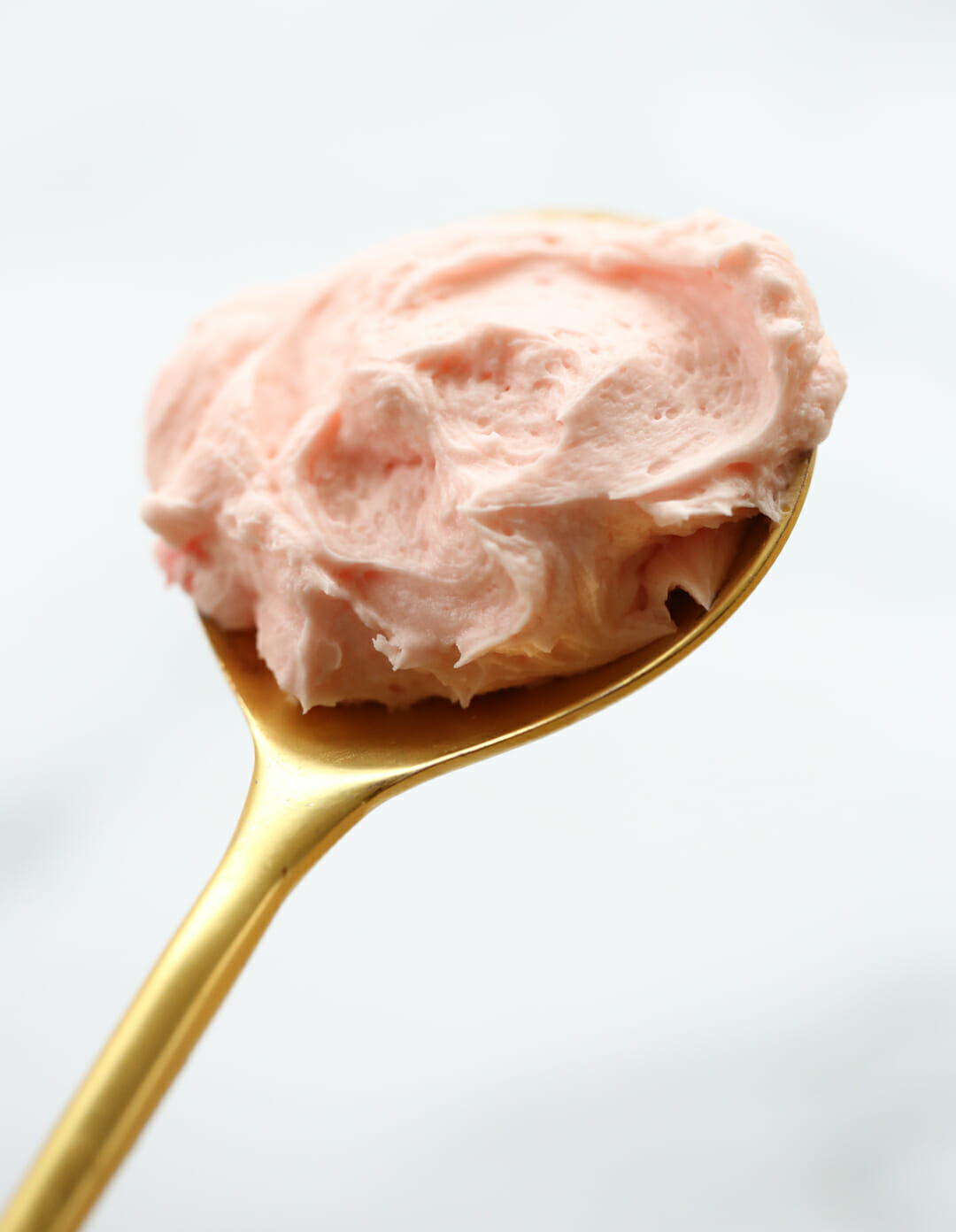
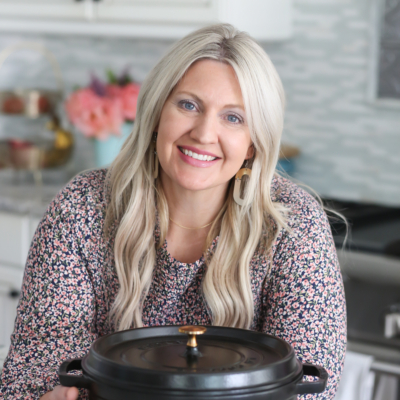







Questions & Reviews
I love your perfect frosting and it is my go-to frosting. I’m interested to try this one ????. Do you have a preference for when you would use the buttercream vs the perfect frosting? Thanks!
Ya know, it’s kind of personal preference. I think traditional buttercream holds up better on things like sugar cookies so I almost always use it for those! I love the perfect frosting on things where you really get a big bite of frosting- like cupcakes. You can’t go wrong with either!
The other night I returned home at about 10pm to find my 16 year old son making a cake for a school fundraiser. He was despondent that he had run out of icing. I quickly recalled your recipe and pulled out the ingredients and within minutes he was on his way to completing his cake. He was very impressed at how easily this came together! Thanks for the tutorial 🙂
I’ll be making this tomorrow to go on our Valentine’s sugar cookies and of course I’ll be using your cookie recipe too. My kiddos are excited for the cookie baking!! I am too!
I definitely needed this three days ago. ???? Usually my frosting comes out ok but this time I didn’t beat the butter enough and I ended up adding way too much sugar. Next time though!
My mom used buttercream frosting for all her wedding cakes!
Hi, thank you for this illustration of how to make the best bc frosting. However, for some reason I cannot get it as silky as I used to back in the 1990’s. Something has changed and I don’t know what it is. Regardless of what I do it seems to come out gritty every time now. I’ve tried so many different suggestions for this American BC but nothing seems to works. What am I doing wrong?
I used Crisco shortening back then and it came out so heavenly, silky and smooth but they changed their formula and I have been disappointed with my frosting ever since. Please help!!!????
Ya know, I think it has to do with the powdered sugar more than anything else. I would definitely sift it first- and you might want to even make sure to buy name-brand sugar that comes from sugar cane (as opposed to sugar beets.) Normally I don’t think that makes a HUGE noticeable difference but if you’re struggling to get it smooth I’d try that, and then follow the other tips in this recipe, especially the beating for extended times, I think that helps to dissolve the sugar!
Thank you for sharing.
I have been looking for a long time for a frosting that I will like the flavor .
I can’t wait to try your recipe the few changes in your recipe my make the difference .
I you have a chocolate frosting that Is your favorite can you share that as well.
Thank you again
One of my favorite ways to add fruity flavors (and some color!) without wetness to frosting is sugar-free jello powder. This is pretty close to the buttercream recipe I use, but it has half butter and half shortening, which makes it whiter and a little more stable at room temperature. I always put a little extra salt even with salted butter. One of my sisters thinks it’s too much, but everyone else is okay with it, and I love sweet and salty anyway! This is a crusting buttercream recipe, and keep in mind that the gel and powder colors will get more intense with time, especially at room temperature.